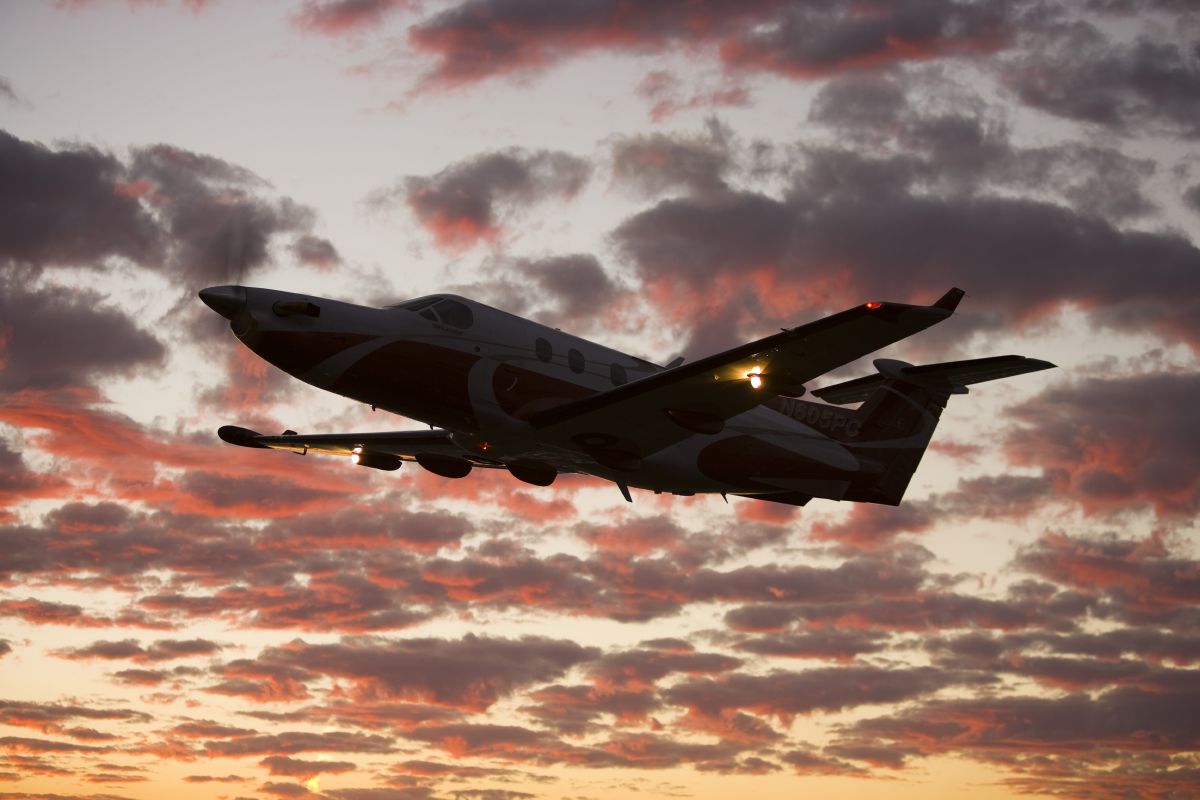Q&A with Pilatus: Part 2
11th October 2018
By Adam Meredith

Thinking about moving up to the turboprop market and unsure of what to expect in the buying process? More than likely, the transition will be easier than you think. In Part 2 of this 3-part Q & A Series, Ronald Smith, Regional Director for Pilatus Aircraft Sales, chats with AOPA Finance President Adam Meredith to give his advice for those looking to move up from piston to turboprop.
What advice do you have for someone moving up from a piston aircraft?
The rumors are true; it’s easier than you think. From my own experience as a pilot, the transition from a piston aircraft to a turbine aircraft is far more docile than most anticipate. Especially if the jump is into a single-engine turbine. I remember feeling anxious myself when preparing to make the transition from the familiar single- and twin-engine pistons to the unknown turbine world. My assumption at that time was the same assumption I encounter today when talking with people who are considering moving up from a piston aircraft, namely: “If the turbine aircraft is much larger than the aircraft I’m currently flying, then it must be proportionately more difficult to operate.” Particularly with the PC-12, the reality is actually inverse to this assumption. The increased automation and sophistication of the systems reduce the pilot’s workload and there is simply less to physically manage. The checklist on the PC-12 is shorter than most piston aircraft. There is no prop management, no mixture management, no shock cooling, no cowl flaps; most of the PC-12’s switches, from pressurization to ignition, live in the ON or AUTO position. Combine this reduction in workload with take-off/approach/landing speeds that are similar to your Cirrus or C182, and you can get the sense that the transition to turbine is very simple.
What are some of the types, make/models you see them moving out of?
The largest source of Pilatus buyers are current Pilatus owners. Second to that group, there have always been many looking to moving up from the Piper piston and turbine segment, however, we have experienced a sizable increase in the number of Cirrus owners looking into the PC-12 in the last few years. Families grow, businesses grow, pilots need to grow. The PC-12 is a logical next step.
What surprises your clients most when purchasing a PC-12?
There are generally two big surprises when someone starts to really peel back the layers of the onion while researching a PC-12 purchase. One is the ease of flying the PC-12, which we delved into earlier. After someone’s first flight, a common reaction is that the PC-12 feels like a big C182. While flying, the pilot does not have the sensation that there are six to eight potential passengers sitting behind them in the cabin (or two motorcycles and four people). The other big surprise is how competitive the total ownership cost of the PC-12 is compared to the marketplace. To calculate total ownership cost, you use the following equation (condensed for simplicity):
(Purchase Price + Cost to Operate during Ownership) – Resale Value = Total Ownership Cost
For all aircraft, a purchase price tells part of the picture with regard to the realities of aircraft ownership. Aside from the cost of acquisition, what will it cost to operate the aircraft 250 hours per year for five years? And most importantly, what does my exit strategy look like after those five years? The price at which you will sell your aircraft at the end of your ownership cycle will affect total ownership cost more than any other component. Historically, after five years of ownership, a newly purchased PC-12 is valued at 85% of its original purchase price. Such value retention is in a league of its own within the market space and is achieved by design through Pilatus’s conservative Swiss business model. Combine this resale value capability with the PC-12’s renown operating efficiencies and the resultant is a total ownership cost after five years that consistently underscores the PC-12 as one of the most compelling values in general aviation.
How many clients use financing?
I would say about 50% use financing
Considering aircraft ownership? AOPA Aviation Finance will make your purchase experience as smooth as possible. For information about aircraft financing, please visit the website (www.aopafinance.com) or call 1-800-62-PLANE (75263).
Click here for Q&A with Pilatus: Part 1 Click here for Q&A with Pilatus: Part 3

AOPA Finance Team
Knowledgeable and friendly aircraft finance professionals you can trust to find the best terms for your financing needs. Our goal is to make aircraft ownership more affordable and accessible to pilots.